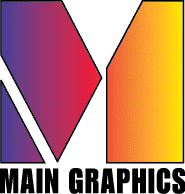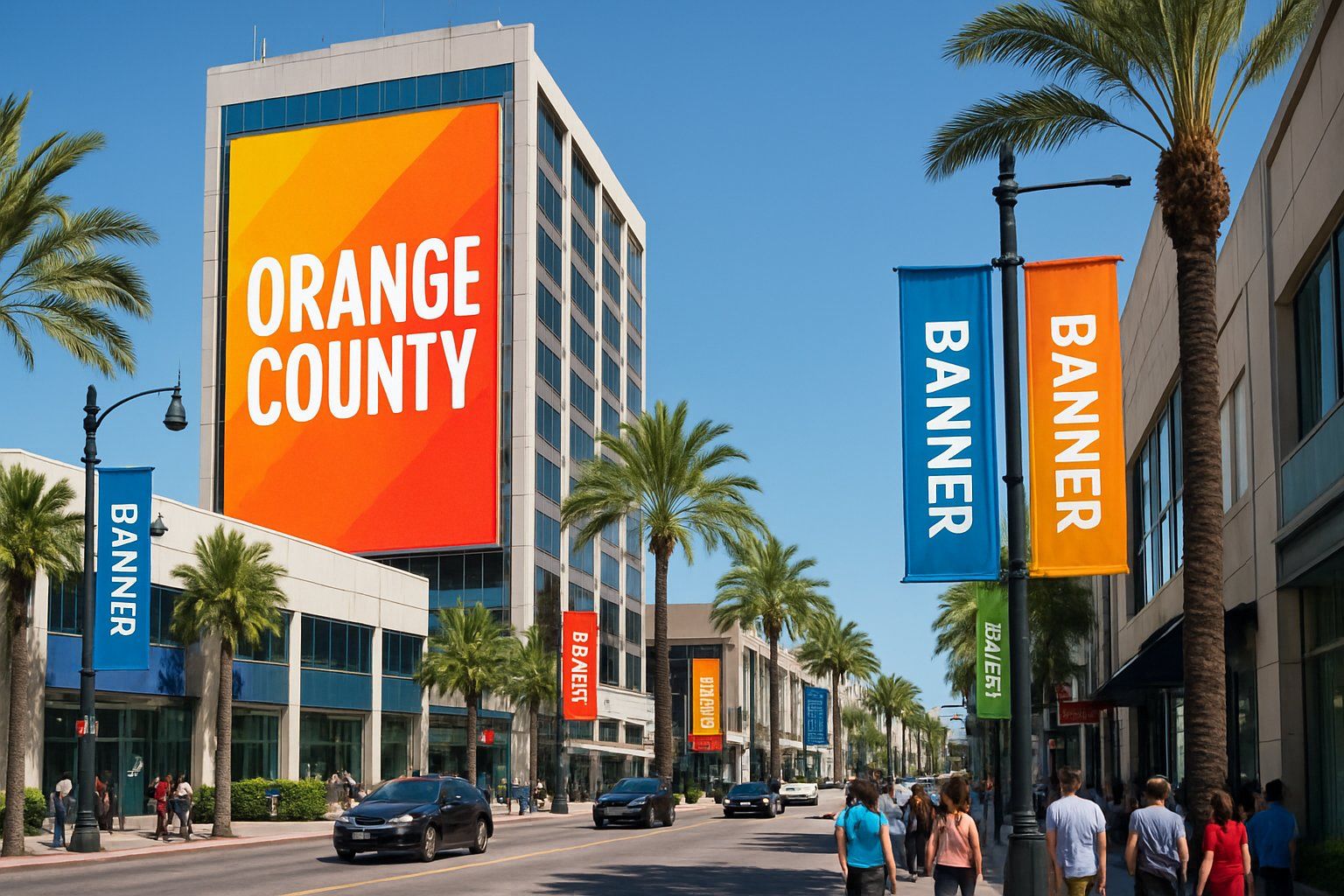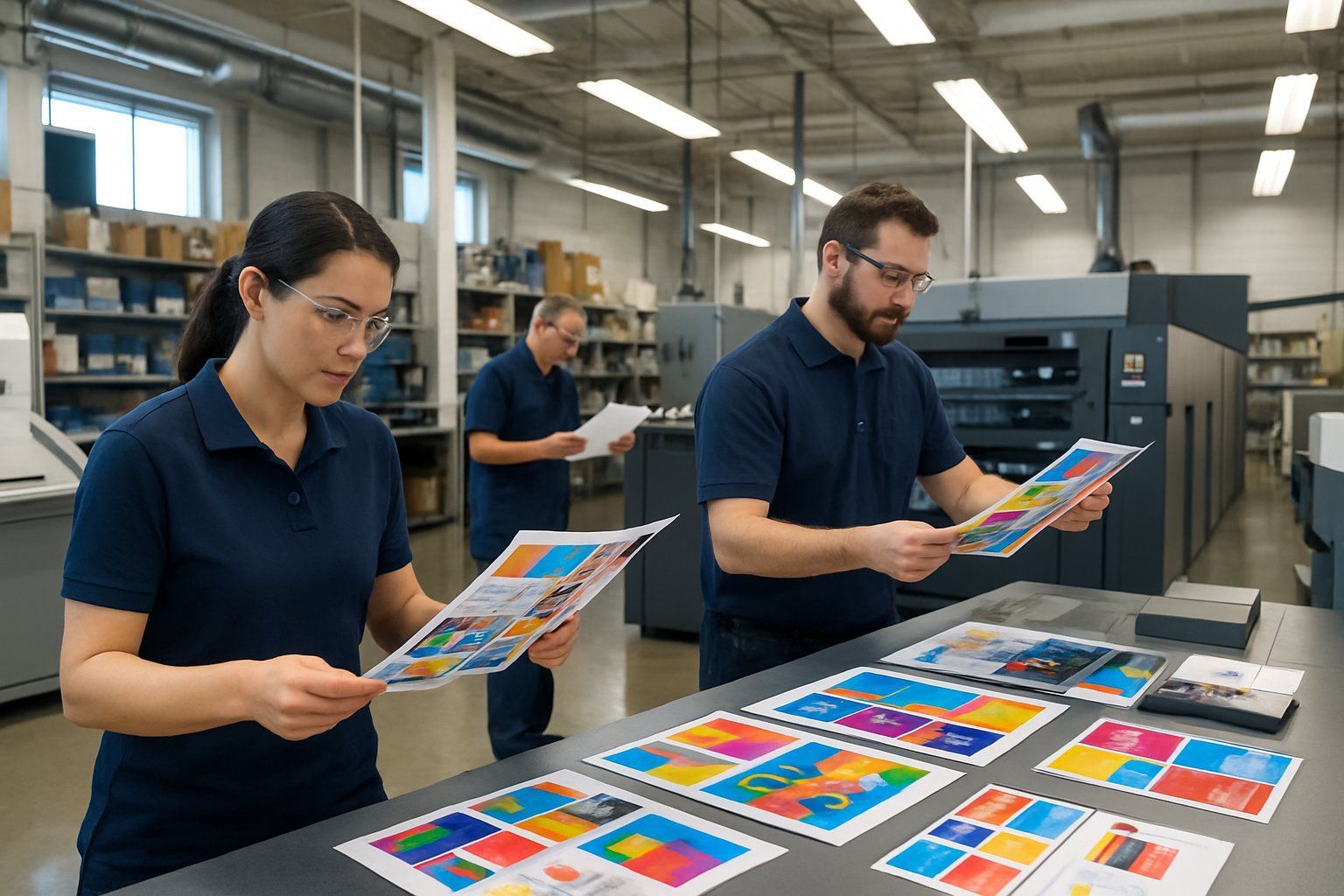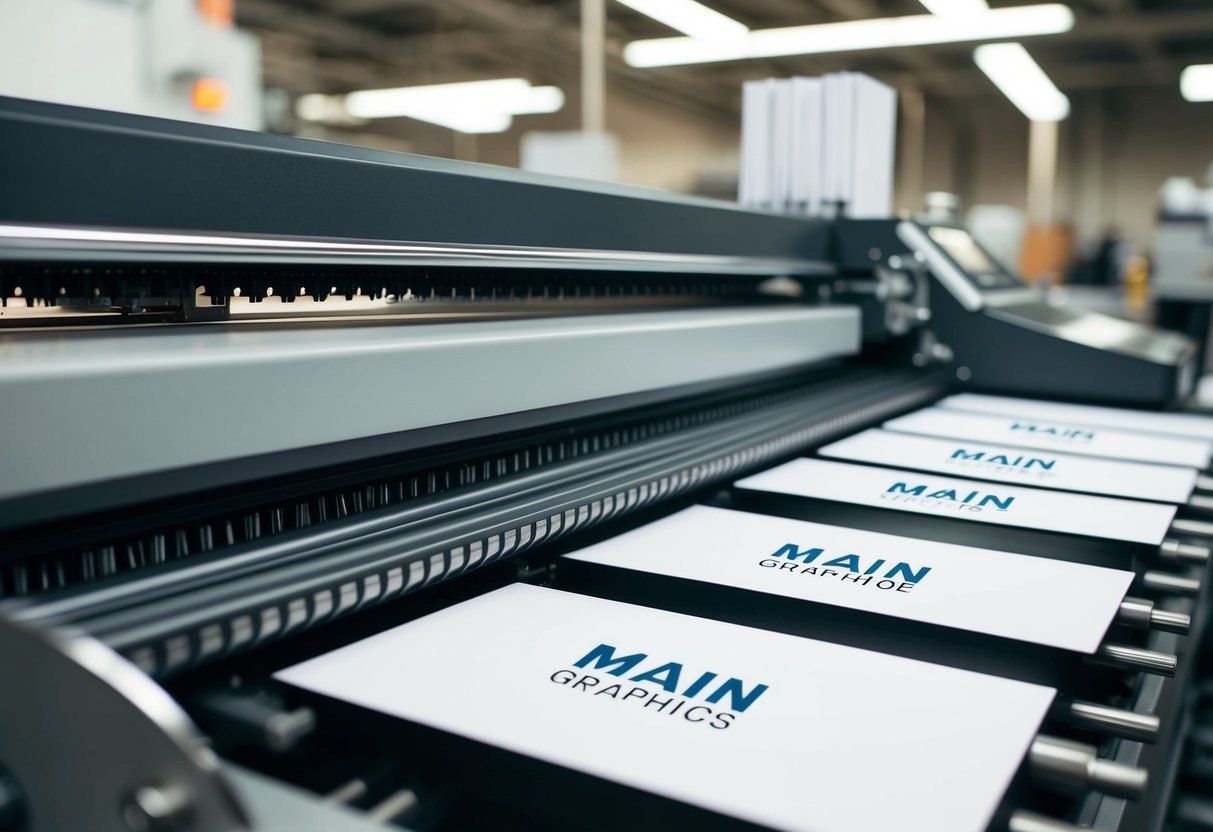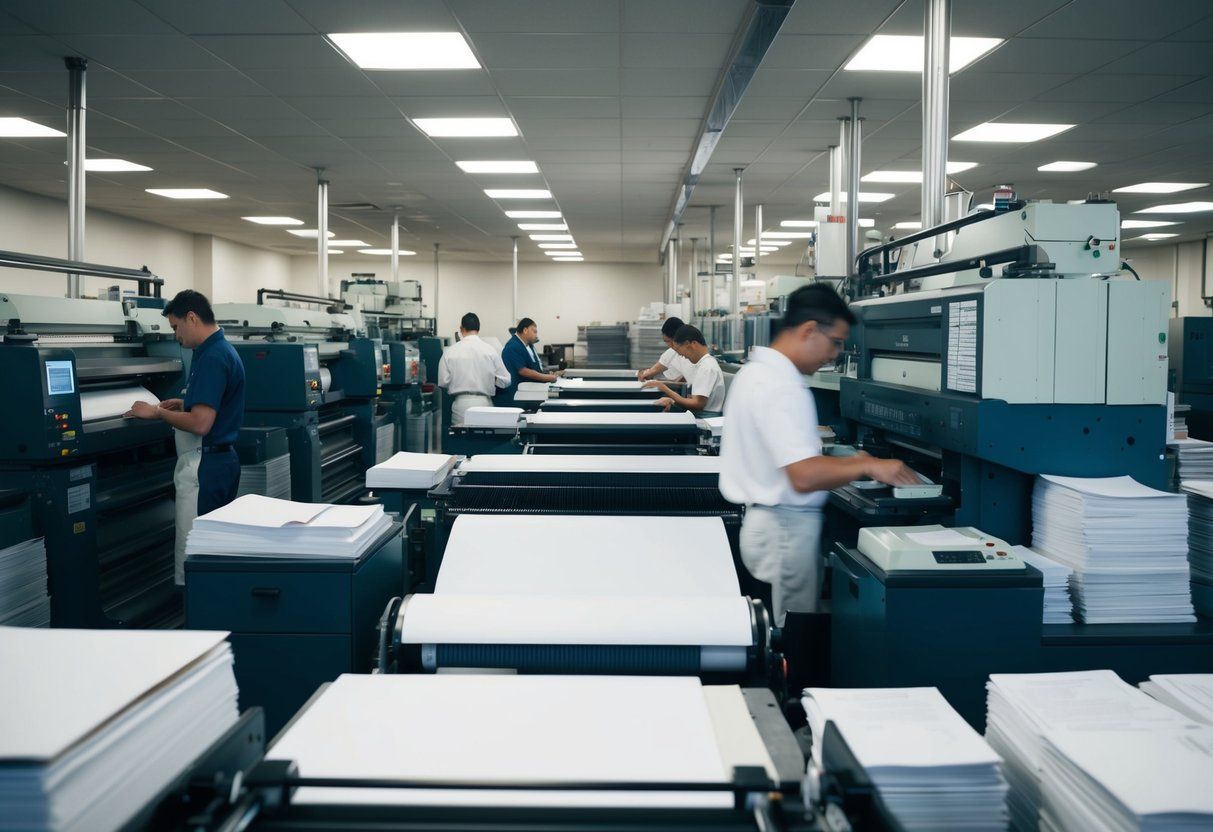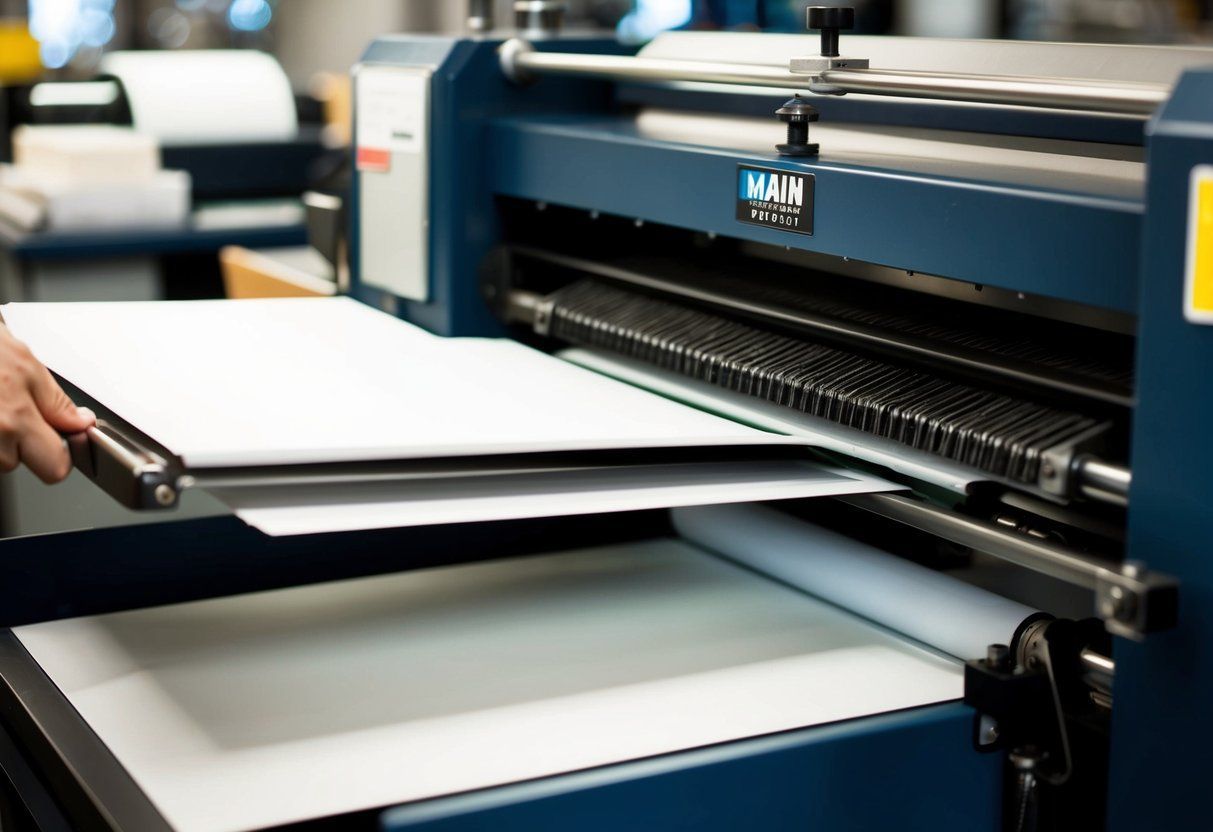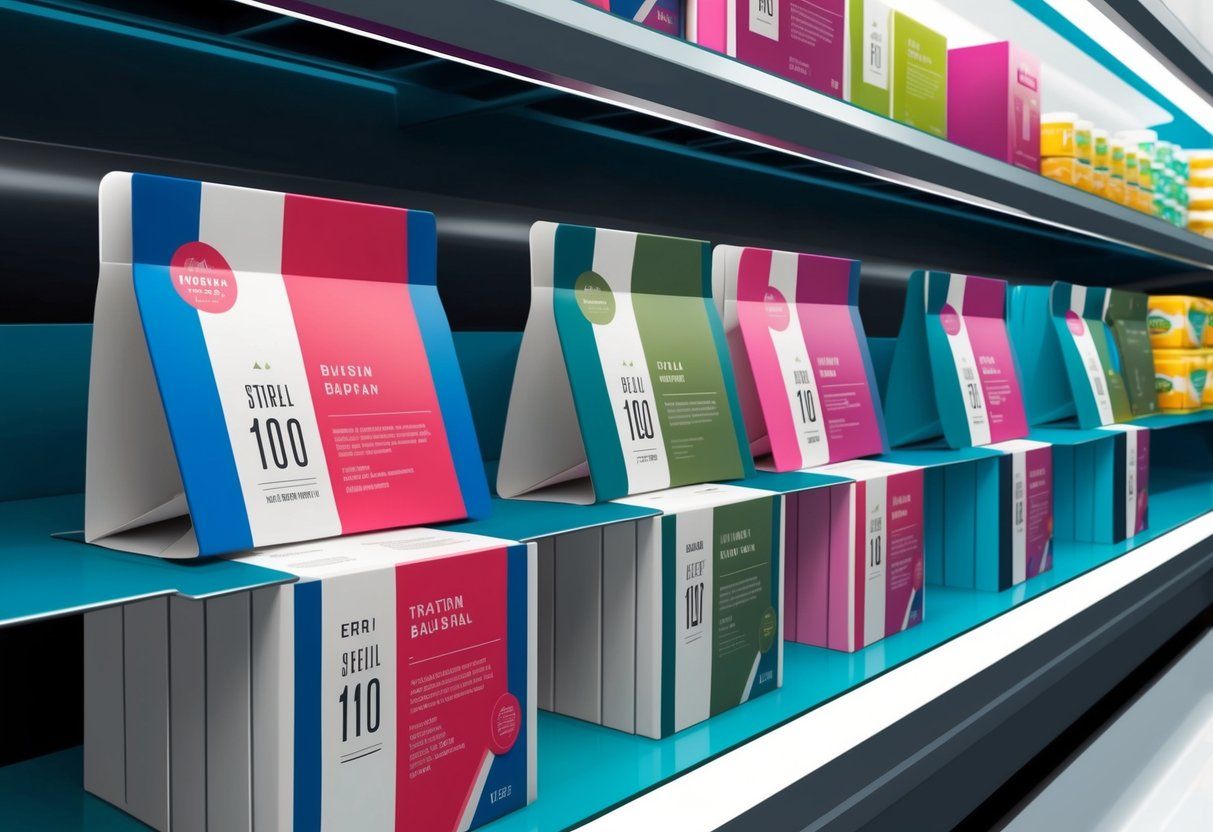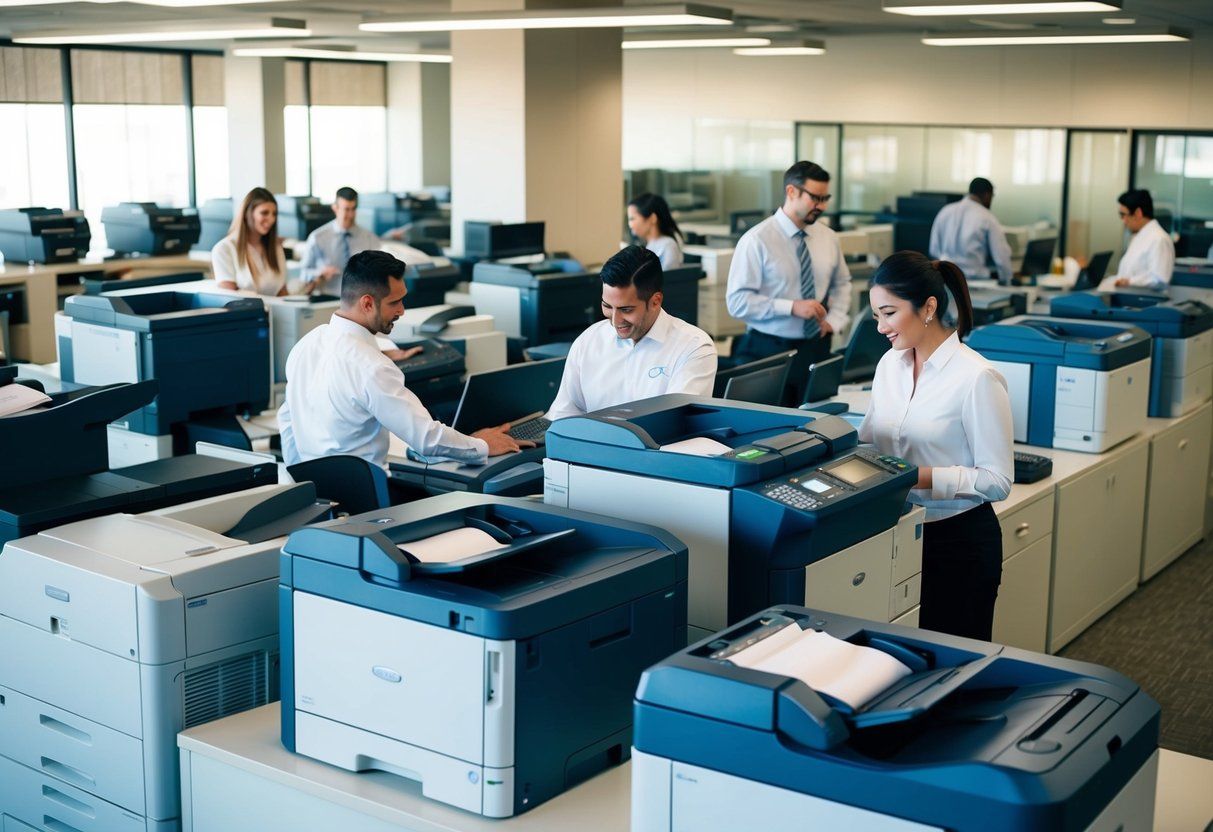Commercial Printing: What You Need to Know
Overview of Commercial Printing
Commercial printing is a professional printing service that involves printing high-quality materials in large quantities for businesses and organizations. This type of printing can be done using either digital or offset printing methods, depending on the needs of the client.
Digital printing is a modern printing technique that involves printing directly from a digital file, without the need for printing plates. This method is ideal for printing small quantities of materials quickly and cost-effectively, such as business cards , flyers , and brochures.
Offset printing, on the other hand, is a traditional printing technique that involves creating printing plates and transferring ink onto paper. This method is ideal for printing large quantities of materials, such as books, magazines, and catalogs, as it is more cost-effective than digital printing for larger runs.
Commercial printing is a highly professional service that requires skilled technicians and high-quality equipment to produce the best results. Professional printers use the latest technology and techniques to ensure that every print is of the highest quality and meets the needs of their clients.
Overall, commercial printing is an essential service for businesses and organizations looking to produce high-quality printed materials in large quantities. Whether it’s for marketing, advertising, or other purposes, professional printing services can help businesses stand out and make a lasting impression on their target audience.
Types of Printing Services
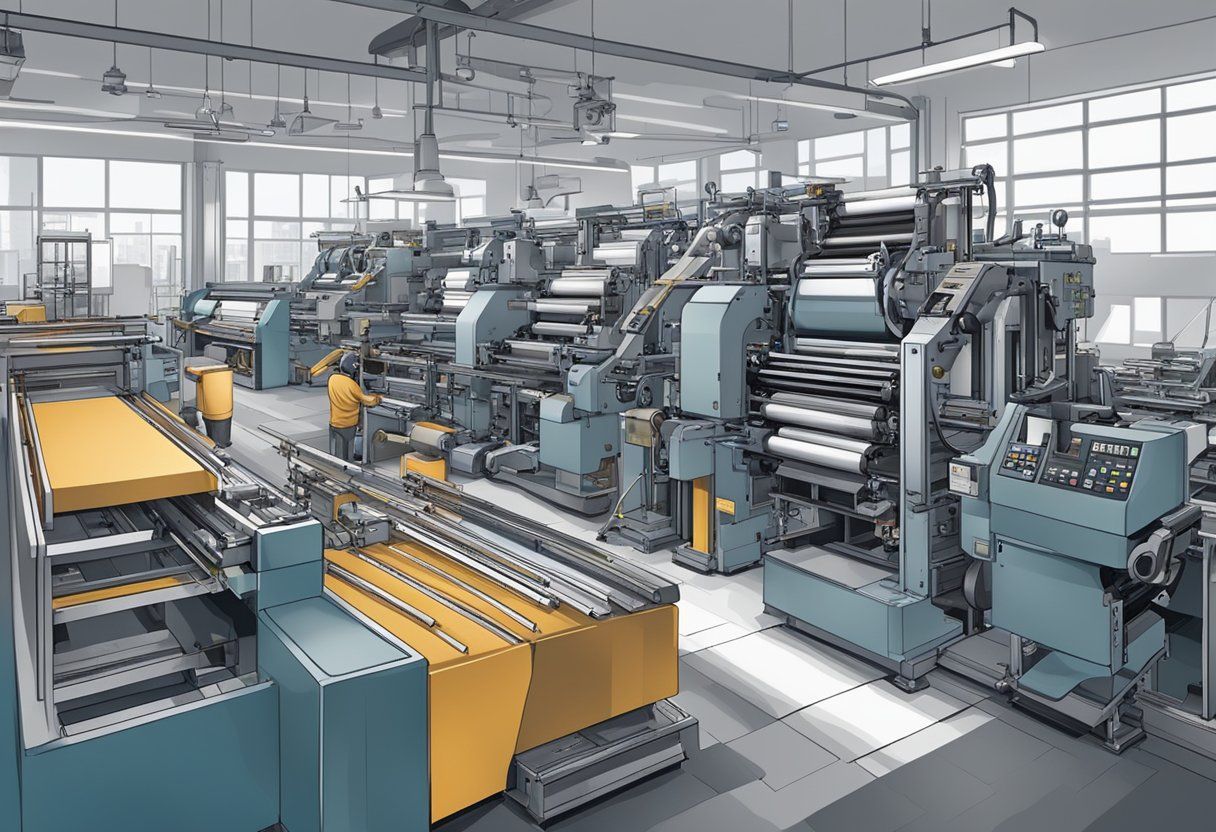
When it comes to commercial printing services, there are several types of printing services available. Each type of printing service has its own unique advantages and disadvantages. In this section, we will discuss the three most common types of printing services: digital print services, offset printing services, and on-demand printing services.
Digital Print Services
Digital printing services are a popular choice for many businesses due to their speed and cost-effectiveness. This type of printing service involves printing digital files directly onto paper or other materials. Digital printing is ideal for short print runs and can produce high-quality prints with vibrant colors and sharp text.
One of the main advantages of digital printing services is the ability to print on-demand. This means that businesses can print only what they need when they need it, which can help reduce waste and save money. Digital printing services are also ideal for printing personalized materials, such as business cards or direct mail pieces.
Offset Printing Services
Offset printing services are a traditional printing method that involves transferring ink from a plate to a rubber blanket, which then transfers the ink to the paper. This type of printing service is ideal for large print runs and can produce high-quality prints with consistent color and sharp text.
One of the main advantages of offset printing services is the ability to print large quantities of materials quickly and efficiently. This makes offset printing ideal for businesses that require large volumes of printed materials, such as brochures, catalogs, and flyers.
On-Demand Printing Services
On-demand printing services are a newer type of printing service that combines the speed and cost-effectiveness of digital printing with the quality of offset printing. This type of printing service involves printing digital files onto a roll of paper, which is then cut and bound into the final product.
One of the main advantages of on-demand printing services is the ability to produce high-quality prints quickly and efficiently. This makes on-demand printing ideal for businesses that require fast turnaround times for their printed materials, such as event programs or training manuals.
In conclusion, choosing the right type of printing service for your business depends on several factors, including the type of materials you need to print, the quantity of materials you need, and your budget. By understanding the advantages and disadvantages of each type of printing service, you can make an informed decision that meets your business’s needs.
Printing Products and Materials
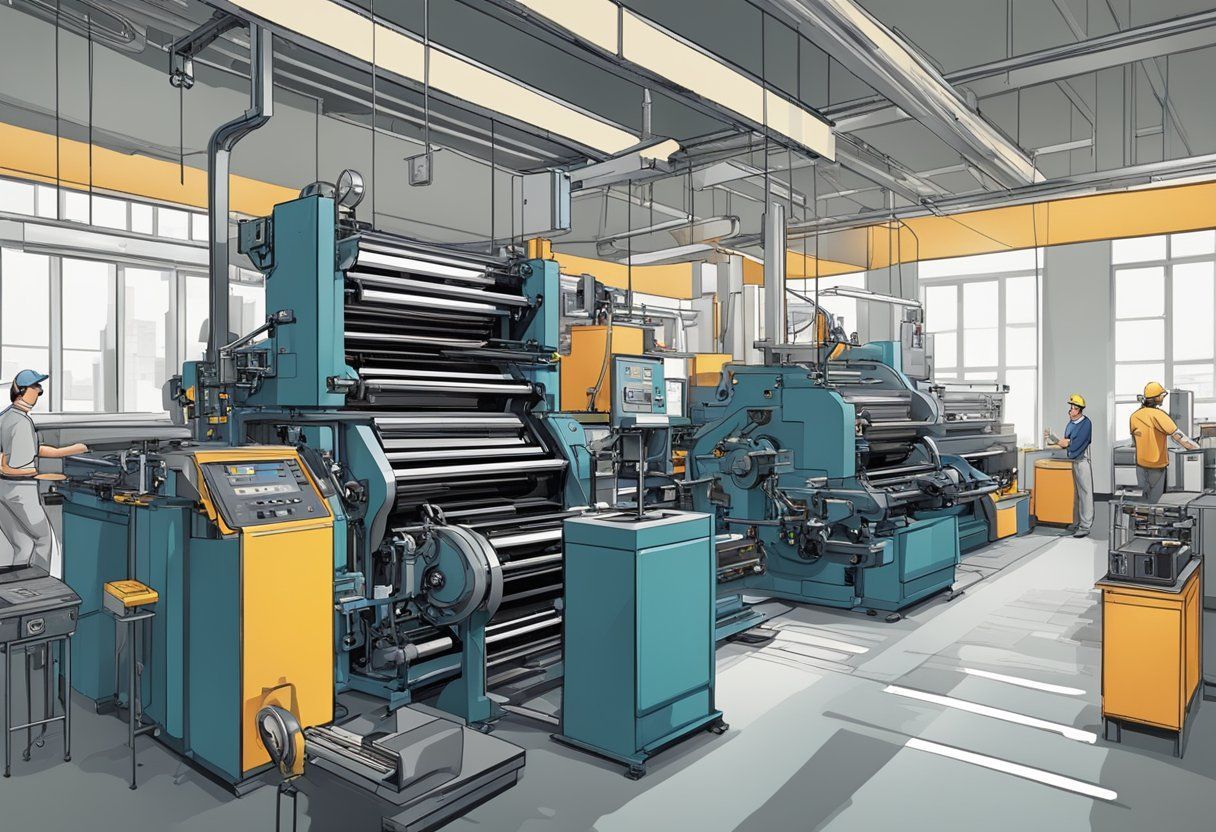
Commercial printing is a diverse industry that produces a wide range of products and materials. From marketing and promotional materials to educational and publishing materials, there is no limit to what can be printed. Here are some of the most common printing products and materials:
Marketing and Promotional Materials
Marketing and promotional materials are essential for any business looking to promote its products or services. Some of the most common marketing and promotional materials that are printed include business cards, flyers, brochures, catalogs , banners, and posters.
Business cards are a must-have for any professional. They are small, portable, and provide a quick way to exchange contact information. Flyers and brochures are great for promoting products or services. Catalogs are ideal for showcasing a company’s entire product line. Banners and posters are perfect for advertising events or special promotions.
Educational and Publishing Materials
Printing is also an important part of the educational and publishing industry. Books, magazines, and educational materials are just a few of the products that are printed.
Books come in all shapes and sizes, from hardcover novels to softcover textbooks. Magazines are typically printed on glossy paper and are filled with articles, photographs, and advertisements. Educational materials, such as workbooks and textbooks, are printed on high-quality paper and are designed to withstand heavy use.
Packaging and Specialty Products
Printing is also used to produce packaging and specialty products. Envelopes, signs, and packaging are just a few examples.
Envelopes come in a variety of sizes and can be printed with a company’s logo or other design elements. Signs are used to promote businesses or to provide information. Packaging is used to protect products during shipping and can be printed with a company’s branding.
Overall, commercial printing is a versatile industry that produces a wide range of products and materials. Whether you need marketing and promotional materials, educational and publishing materials, or packaging and specialty products, there is a printing solution for every need.
Design and Prepress Services
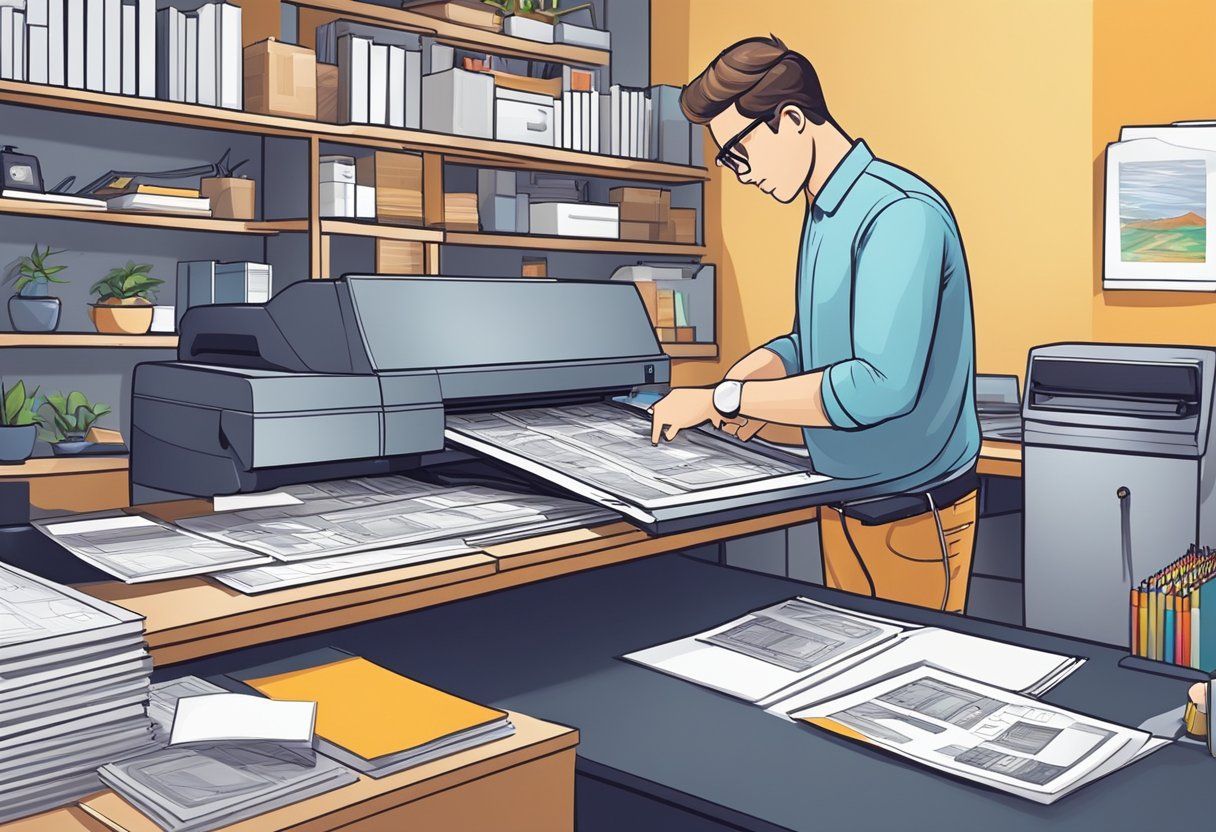
Commercial printing requires a design team that is experienced in creating visually appealing and effective designs. The design team should be able to work with clients to develop a brand image and create designs that align with the client’s goals.
Graphic Design and Branding
Graphic design plays a crucial role in commercial printing. A skilled graphic designer can create designs that are visually appealing and effective in communicating the client’s message. The designer should be able to create designs that are consistent with the client’s brand image and messaging.
The branding process involves creating a unique identity for a business or product. This identity should be reflected in all marketing materials, including printed materials. A skilled design team can help create a consistent brand image that is recognizable and memorable.
Prepress and Proofing
Prepress is the process of preparing digital files for printing. This process includes checking the files for errors, adjusting colors, and ensuring the files are formatted correctly for the printing process. A skilled prepress team can catch errors before they become costly mistakes and ensure that the final product meets the client’s expectations.
Proofing is an essential part of the printing process. It involves reviewing a printed proof of the design to ensure that it meets the client’s expectations. A skilled design team should be able to provide multiple proofing options to ensure that the final product is perfect.
In conclusion, a skilled design team is essential for creating effective and visually appealing printed materials. The team should be experienced in graphic design and branding and should be able to provide prepress and proofing services to ensure the final product meets the client’s expectations.
Finishing, Fulfillment, and Distribution

Commercial printing is not just about printing. It is about taking the printed materials and turning them into finished products that are ready for distribution. This is where finishing, fulfillment, and distribution come into play.
Binding and Finishing Techniques
Binding and finishing techniques are essential in commercial printing as they give the final product a professional look and feel. There are several binding and finishing techniques available in the market, including saddle stitching, perfect binding, wire-o binding, and case binding. Each technique has its own advantages and disadvantages, and the choice of technique depends on the type of product being produced.
Finishes are also important in commercial printing as they can enhance the look and feel of the printed materials. Some of the popular finishes include gloss, matte, satin, and UV coating. Finishes not only add an aesthetic appeal but also protect the materials from wear and tear.
Inventory Management and Kitting
Inventory management and kitting are crucial aspects of commercial printing. Managing inventory effectively ensures that the right materials are available when needed, reducing the risk of delays and downtime. Kitting involves grouping multiple items together to create a complete package, making it easier for the end-user to access all the necessary materials in one place.
Mailing and Direct Marketing Services
Mailing and direct marketing services are also an integral part of commercial printing. These services help businesses reach out to potential customers and promote their products and services. Direct mail campaigns can be highly targeted and personalized, making them an effective marketing tool.
In conclusion, finishing, fulfillment, and distribution are essential components of commercial printing. The right choice of binding and finishing techniques, inventory management, kitting, and mailing and direct marketing services can make a significant difference in the success of a printing project.
Industry-Specific Printing Solutions
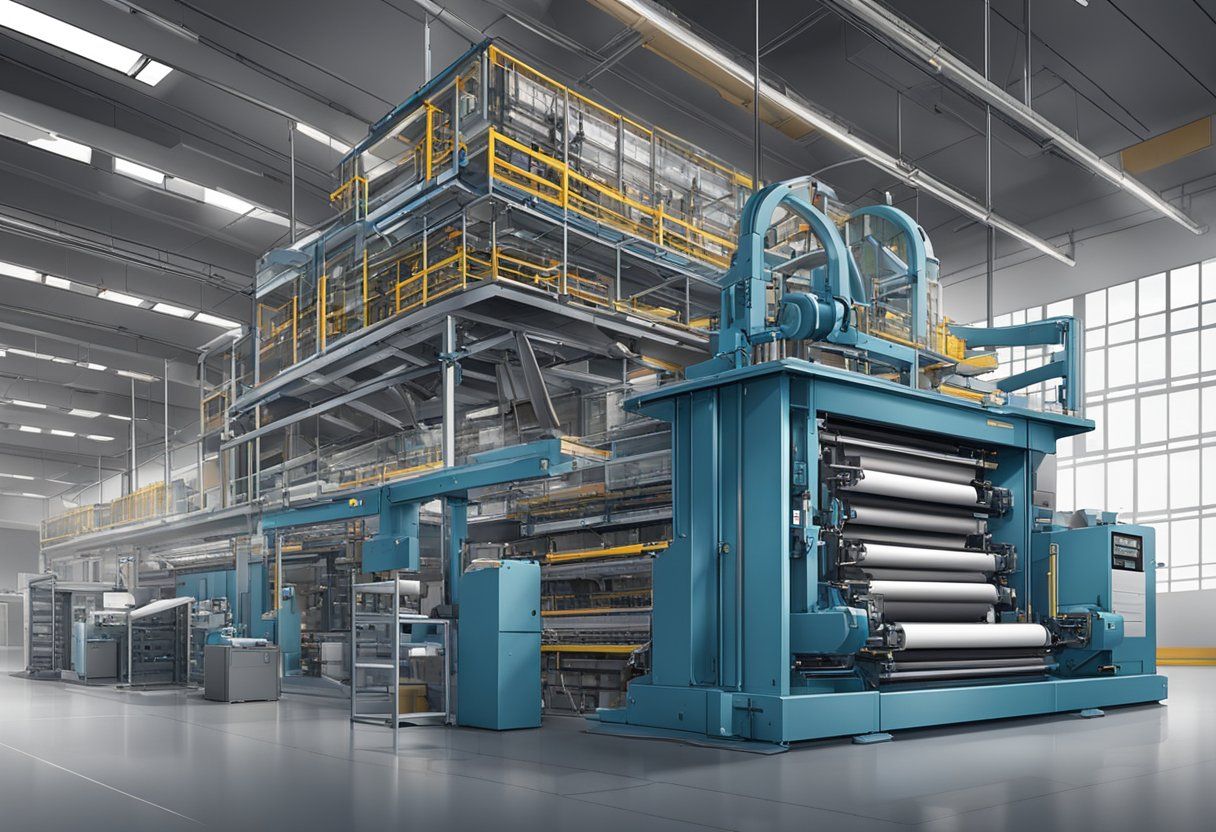
Commercial printing offers a range of industry-specific solutions that cater to the unique needs of various businesses. From retail and consumer goods to financial and insurance services, corporate and Fortune 500 partnerships, and more, these solutions are designed to help businesses communicate effectively with their target audience.
Retail and Consumer Goods
Retail and consumer goods companies rely heavily on high-quality printing to showcase their products and services. From brochures and catalogs to packaging and labels, commercial printing offers a range of solutions that help businesses promote their products effectively. Retail and consumer goods companies often require quick turnaround times and high-quality printing to meet the demands of the market.
Financial and Insurance Services
Financial and insurance services companies require printing solutions that are secure, high-quality, and compliant with industry regulations. Commercial printing offers a range of solutions that cater to the unique needs of these businesses, including secure printing, variable data printing, and more. These solutions help businesses communicate effectively with their clients while maintaining the highest standards of security and compliance.
Corporate and Fortune 500 Partnerships
Corporate and Fortune 500 partnerships require printing solutions that are reliable, high-quality, and cost-effective. Commercial printing offers a range of solutions that cater to the unique needs of these businesses, including custom printing, large format printing, and more. These solutions help businesses communicate effectively with their partners while maintaining the highest standards of quality and professionalism.
In conclusion, industry-specific printing solutions offer businesses the opportunity to communicate effectively with their target audience while maintaining the highest standards of quality and professionalism. Whether it’s retail and consumer goods, financial and insurance services, corporate and Fortune 500 partnerships, or any other industry, commercial printing offers a range of solutions that cater to the unique needs of businesses.
Frequently Asked Questions

What types of jobs are available in the commercial printing industry?
The commercial printing industry offers a wide range of job opportunities, including graphic designers, prepress technicians, press operators, bindery workers, sales representatives, and customer service representatives. There are also managerial and administrative positions such as production managers, plant managers, and accounting personnel.
How is the commercial printing industry classified under NAICS?
The commercial printing industry is classified under NAICS (North American Industry Classification System) code 323. This code includes establishments primarily engaged in printing on paper, cardboard, plastic, metal, glass, textiles, and other materials.
What equipment is essential for starting a commercial printing business?
The essential equipment for starting a commercial printing business includes a computer with graphic design software, a digital or offset printing press, a paper cutter, a folding machine, a binding machine, and a laminating machine. Other equipment may be required depending on the specific needs of the business.
Can you provide examples of materials typically produced by commercial printers?
Commercial printers produce a wide range of materials, including business cards, brochures, flyers, posters, banners, labels, packaging, books, magazines, newspapers, and more. They also provide services such as variable data printing, direct mail marketing, and large format printing.
What are the distinguishing features of commercial print modeling?
Commercial print modeling involves the use of models in advertising and promotional materials, such as catalogs, brochures, and billboards. The models are typically shown in a lifestyle setting, showcasing the product or service being advertised. Commercial print models are usually required to have a clean and professional appearance, with a focus on conveying a positive image.
Which printing method is most commonly used in the commercial printing sector?
The most commonly used printing method in the commercial printing sector is offset printing. This method involves transferring an inked image from a printing plate to a rubber blanket, and then onto the printing surface. Offset printing is known for its high quality and cost-effectiveness, making it a popular choice for large print runs.…
